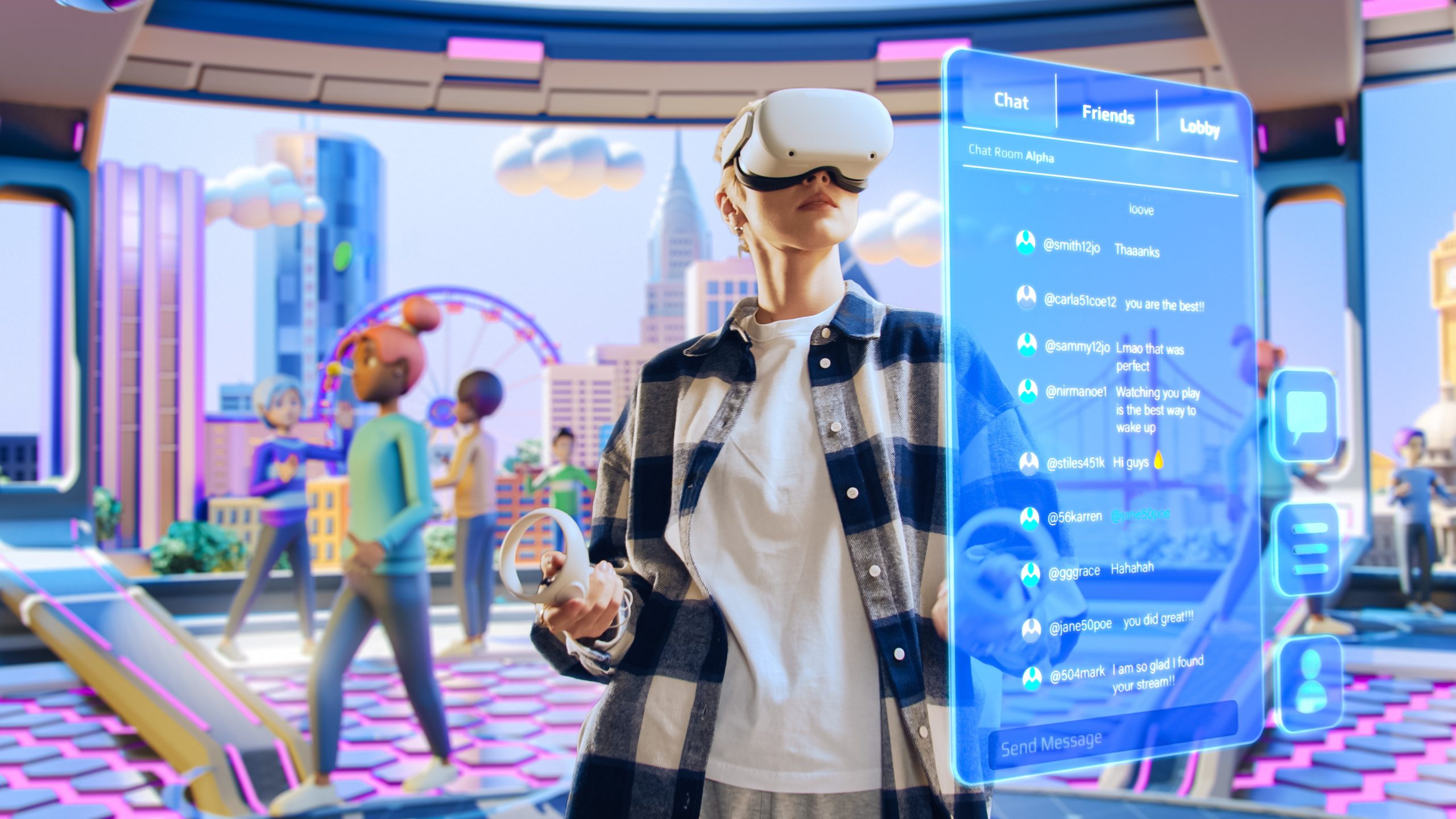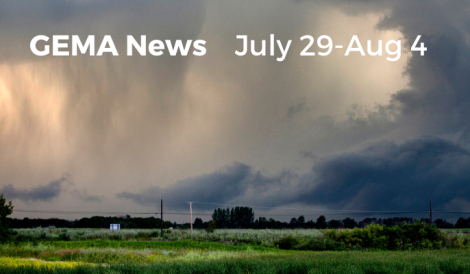Our world is rapidly been taken over by Artificial Intelligence and the vast requirement for digital storage had resulted in the development of DNA storage. In a darker agenda the likes of Mark Zuckerberg of Meta (Facebook) want to merge humans fully into artificial, virtual reality, way beyond just gaming environments into a space that the AI cabal intends to use to capture all of humanity.
DNA Storage
“DNA data storage is a relatively new and innovative approach to storing digital data. It uses the four nucleotide bases – adenine (A), guanine (G), cytosine ©, and thymine (T) – to store binary data, which is the fundamental language of computers. This technology has the potential to revolutionize the way we store and manage data, offering numerous benefits over traditional storage methods.
How DNA Storage Works
In DNA storage, data is encoded into DNA molecules using a process called DNA synthesis. The DNA molecules are then synthesized and stored in a compact form, allowing for extremely high storage densities. To read the data, the DNA molecules are sequenced, and an algorithm recognizes the unique combination of nucleotides to retrieve the original data.
Advantages of DNA Storage
- High Storage Density: DNA storage can store massive amounts of data in a very small space, making it an attractive solution for data centers and cloud storage.
- Long-Term Data Preservation: DNA molecules are extremely durable and can last for thousands of years, making it an ideal solution for long-term data archiving.
- Low Power Consumption: DNA storage requires minimal power to maintain, making it an energy-efficient solution.
- Security: DNA storage is highly secure, as it is difficult to alter or destroy the data without being detected.
Challenges and Limitations
- Cost: The cost of synthesizing and sequencing DNA molecules is currently high, making it less practical for widespread adoption.
- Speed: DNA storage is slower than traditional storage methods, as it requires sequencing and decoding the DNA molecules to retrieve the data.
- Error Correction: DNA storage is prone to errors, which can occur during the synthesis and sequencing process.
Current Developments and Future Prospects
Several companies and research institutions are actively working on developing DNA storage technology, including Microsoft, Google, and IBM. While there are still challenges to overcome, the potential benefits of DNA storage make it an exciting area of research and development.
Conclusion
DNA storage is a promising technology that has the potential to revolutionize the way we store and manage data. While there are challenges to overcome, the benefits of high storage density, long-term data preservation, low power consumption, and security make it an attractive solution for the future of data storage. As the technology continues to evolve, we can expect to see widespread adoption in various industries, from data centers to cloud storage and beyond.” (AI generated)
Introducing DNA Data Storage with the DNA Data Storage Alliance
DNA data storage, an emerging solution, aims to tackle the increasingly inefficient traditional storage systems by offering unparalleled density, low energy consumption, and extensive data retention capabilities. Its process involves translating files into DNA sequences, structured in a way similar to traditional channels, while the DNA Data Storage Alliance is actively developing standards for this ground-breaking technology. The ultimate goal is to develop more affordable and efficient storage options, with aims to store a whopping one petabyte per chip. The DNA Data storage maintains a vital presence in data centers for archival purposes while introducing newer technologies for an error-free and streamlined data management experience.
The Quest for a DNA Data Drive
The world is running out of data storage. Here’s how DNA could save us.
HOW MUCH THOUGHT DO you give to where you keep your bits? Every day we produce more data, including emails, texts, photos, and social media posts. Though much of this content is forgettable, every day we implicitly decide not to get rid of that data. We keep it somewhere, be it in on a phone, on a computer’s hard drive, or in the cloud, where it is eventually archived, in most cases on magnetic tape. Consider further the many varied devices and sensors now streaming data onto the Web, and the cars, airplanes, and other vehicles that store trip data for later use. All those billions of things on the Internet of Things produce data, and all that information also needs to be stored somewhere.
Data is piling up exponentially, and the rate of information production is increasing faster than the storage density of tape, which will only be able to keep up with the deluge of data for a few more years. The research firm Gartner predicts that by 2030, the shortfall in enterprise storage capacity alone could amount to nearly two-thirds of demand, or about 20 million petabytes. If we continue down our current path, in coming decades we would need not only exponentially more magnetic tape, disk drives, and flash memory, but exponentially more factories to produce these storage media, and exponentially more data centers and warehouses to store them. Even if this is technically feasible, it’s economically implausible.
Fortunately, we have access to an information storage technology that is cheap, readily available, and stable at room temperature for millennia: DNA, the material of genes. In a few years your hard drive may be full of such squishy stuff.
Storing information in DNA is not a complicated concept. Decades ago, humans learned to sequence and synthesize DNA—that is, to read and write it. Read more…
The Emergence of DNA Data Storage, and the Future of DNA Computing: Nick Gold, Catalog
Why DNA is a useful molecule for storing digital information. What is the emerging set of technologies in biotech and synthetic biology that allow for the storage of digital information in synthetic DNA molecules. And how can data in DNA form can be computed on directly using biomolecular computing techniques, and what advantages this approach will offer over traditional forms of computation. (A correction: at ~21:10 I misspoke, and said that chemically adding each base pair to a synthetic DNA sequence takes tens of minutes. This was a misstatement, the correct unit is seconds. It takes roughly 30 seconds to add each base during the chemical synthesis process. Still, at ~30-seconds per base, this is still many orders of magnitude too slow for write speeds that approach those we are used to with data storage technologies we are used to in IT.)
Billy Carson – The Power of Human DNA: Lost Memories of the Ancient Gods Within Us
The Power of Human DNA: Lost Memories of the Ancient Gods Within Us – Billy Carson discusses the need to reprogram our DNA, impacted by our shared human history. He delves into our enslavement within the societal construct, revealing that memories are encoded in our DNA. Additionally, he highlights the influence of a few families, ancient Sumerian tablets, and our spiritual potential, advocating for using existing systems to elevate consciousness and promote positive change.
Virtual Reality and The Metaverse
What is virtual reality and the metaverse?
“Virtual Reality (VR) is a computer-generated simulation of a three-dimensional environment that can be experienced and interacted with in a seemingly real or physical way. VR technology uses a combination of hardware and software to create an immersive and interactive experience for the user. This can include virtual objects, environments, and characters that can be seen, heard, and even touched.
In VR, the user is typically surrounded by a headset or device that provides a 360-degree view of the virtual environment. The user can use controllers, gloves, or other devices to interact with the virtual objects and environment. VR technology is often used in gaming, education, training, and entertainment.
What is the Metaverse?
The Metaverse is a concept that refers to a hypothetical future iteration of the Internet, where virtual reality (VR) and augmented reality (AR) technologies converge to create a seamless and immersive experience. The Metaverse is often described as a virtual universe or a shared, persistent virtual world that is accessible through various devices and platforms.
In the Metaverse, users can interact with each other and with virtual objects and environments in a way that is similar to the real world. The Metaverse is expected to be a highly immersive and interactive experience, where users can engage in various activities such as socializing, working, playing, and learning.
The Metaverse is often associated with the concept of a “virtual universe” or a “shared virtual reality” that is facilitated by the use of VR and AR technologies. The Metaverse is expected to be a highly interactive and immersive experience, where users can engage in various activities such as socializing, working, playing, and learning.
Key differences between VR and Metaverse
While VR is a technology that creates a simulated environment, the Metaverse is a concept that refers to a hypothetical future iteration of the Internet. Here are some key differences between VR and Metaverse:
- Scope: VR is a technology that creates a simulated environment, while the Metaverse is a concept that refers to a hypothetical future iteration of the Internet.
- Interactivity: VR is highly interactive, allowing users to engage with virtual objects and environments in a physical way. The Metaverse is expected to be even more interactive, allowing users to engage with each other and with virtual objects and environments in a seamless and immersive way.
- Persistence: VR experiences are typically limited to a specific time frame, while the Metaverse is expected to be a persistent virtual world that exists continuously.
- Scalability: VR experiences are typically limited to a specific device or platform, while the Metaverse is expected to be accessible through various devices and platforms.
In summary, VR is a technology that creates a simulated environment, while the Metaverse is a concept that refers to a hypothetical future iteration of the Internet. While VR is highly interactive and immersive, the Metaverse is expected to be even more interactive and immersive, allowing users to engage with each other and with virtual objects and environments in a seamless and immersive way.” (AI generated)
Explaining the Metaverse Everything You Need to Know About Future of the Internet
The Metaverse in 2040
Hype? Hope? Hell? Maybe all three. Experts are split about the likely evolution of a truly immersive ‘metaverse.’ They expect that augmented- and mixed-reality enhancements will become more useful in people’s daily lives. Many worry that current online problems may be magnified if Web3 development is led by those who built today’s dominant web platforms
Interest in the idea of the metaverse leaped in 2021-2022, prompted in part by Facebook’s decision to rebrand itself as “Meta.” The word was coined by sci-fi author Neal Stephenson in 1992 in his novel “Snow Crash.” In today’s terms, the metaverse is the realm of computer-generated, networked extended reality, or XR, an acronym that embraces all aspects of augmented reality, mixed reality and virtual reality (AR, MR and VR). At this point in time, the metaverse is generally made up of somewhat- immersive XR spaces in which interactions take place among humans and automated entities. Some are daily interactions with augmented-reality apps that people have on their computers and phones. Some are interactions taking place in more-immersive domains in gaming or fantasy worlds. Some occur in “mirror worlds” that duplicate real-life environments.
While extended-reality gaming and social spaces have been in existence for decades, early 2020s technological advances and societal transformations brought about by the COVID-19 pandemic have pushed the development of the metaverse to the forefront, inspiring tens of billions of dollars in new investments and prompting predictions that the metaverse is “the future of the internet” or “the next internet battleground.” Read more…




